

Chicago Stadium (0pened 1929; demolished 1995) during its final year of use in 1994.
Chicago in the Eighties was an era of Super Bowl Shuffling Bears, non-ironic bushy mustaches, big hair and colorful sweaters with wide horizontal stripes. During this decade of conspicuous consumption, the City of Big Shoulders drowned the thirst of a 22-year sports championship drought*. The beloved Bears destroyed the New England Patriots in Super Bowl XX on January 26, 1986 by the excessive score of 46-10 and owned Chicago.
While the Bears often were the lead story of the news, the White Sox, Cubs, Bulls and Blackhawks all struggled for attention. Even when Michael Jeffrey Jordan was drafted by the Bulls in 1984, the news was a footnote to the Walter Payton and Mike Ditka-helmed Monsters of the Midway. It was not until MJ’s worldwide coming out party at the 1988 NBA All Star Weekend that the entire sports world started to take notice. Michael Jordan and the Bulls were getting their dancing shoes ready.
Before Michael Jordan won six NBA titles in the 1990s, the Chicago Bears stars like running back legend Walter Payton and Iron Mike Ditka dominated the 1980s’ Windy City sports scene.
The duration of the Windy City’s early 80’s championship drought depended on whether fans counted the Chicago Sting’s two NASL Soccer Bowl victories in 1981 and 1984. Given that most Chicagoans barely noticed soccer existed in the Eighties, the last big-time Chicago champion had been the 1963 Chicago Bears’ NFL Championship win against the New York Giants in Wrigley Field (i.e. the pre-Super Bowl era). Meanwhile, the Sox and Cubs won their divisions in 1983 and 1984 respectively, but neither would win a championship until the 21st Century.
Left: Stanley Sting, the Chicago Sting’s mascot was not a major player amongst the Chicago sporting elite despite the Sting winning two NASL Soccer Bowl trophies in 1981 and 1984 before the league folded in 1985.
Middle: White Sox catcher Carlton Fisk.
Right: Cub’s second baseman Ryne Sandberg.
When the Bulls drafted Michael Jordan, there was muted excitement in the Chicago sports world. At that time, DePaul University’s college basketball team was far more popular than the NBA team playing at 1800 W. Madison Street. DePaul had been a perennial contender under legendary coach Ray Meyers and was an NBA talent factory.
More people talk about top ranked DePaul’s shocking 2nd round NCAA tournament loss to St. Joes or the skills of Mark Aguirre than anything about the Bulls.
Even after MJ starred during the 1984 Los Angeles Summer Olympics, it was rare to see a full house at the Madhouse on Madison in the pre-gentrified West Side. To draw fans, the Bulls would sometimes host post-game concerts by musicians such as Chaka Kahn. Tickets were so inexpensive that my under-employed uncle could afford season tickets. In the early Jordan years, tickets for decent loge seats were only 15 bucks.
Clockwise from top left: During Michael Jordan’s early days, Chicago Stadium was rarely full and a pimple-faced high school kid could get close enough to snap photos of MJ walking to the locker room; earlier versions of Benny the Bull were slightly mangy; Michael slam dunks against his nemeses the Detroit Pistons; DePaul University dominated the Chicago basketball world in the early 80s at the suburban Rosemont Horizon arena; Michael Jordan departing the subterrainian locker room at Chicago Stadium; Chicago Stadium had plenty of good seats for a 1986 game against the Seattle Supersonics.
Author’s tangent: Like MJ searching for his winning touch in the late 80’s, I had not quite honed my photography skills during my high school years. In those days, I used a Minolta Maxxum autofocus camera because I lacked the patience to learn how to use a real 35mm film SLR Nikon as my photography teacher had encouraged. Plus, the technology for low light photography was far less advanced than today’s modern digital cameras. As a result, some of my early Bulls’ photos at dark old Chicago Stadium are suboptimal at best. I included them nonetheless to capture some of the feel of the pre-digital/internet/cell phone era.
With each season, the Bulls and Michael Jordan began to garner Chicagoans’ attention as the NBA moved beyond the short shorts and canvas sneaker era. Sure, they were an afterthought compared to the Bears, but MJ’s exploits such as a 63 point first round playoff game in 1986 against the Celtics or his 1987 Slam Dunk Contest win in Seattle raised his national profile. The early excitement, however, paled in comparison to the Rockstar Bulls of the 90s when my uncle practically had a full-time job selling his Bulls tickets to eager ticket brokers.
Left to Right: Chicago Stadium exterior featured neo-classical friezes of athletes; the Bulls’ 1987 pocket schedule bragged about the team making the playoffs twice in a row; former player Doug Collins coached the Bulls during their late 80s ascendency; Michael Jordan jawing with the hated Pistons in a late 80s contest.
The Bulls took another step towards becoming a basketball dynasty with the 1987 drafting of future stars Scottie Pippen and Horace Grant. Little by little, the Bulls’ mercurial GM Jerry Kraus was putting the pieces of the puzzle together. Nevertheless, the Bulls could not get past the Pistons in the playoffs. The Bad Boys from Detroit were the annual reminder that the Bulls were not ready for Prime Time. Personally, I got a daily reminder when my college roommate (from Michigan) hung up a Bad Boys poster of Rick Mahorn and the dreaded villain Bill Laimbeer. For the first two years of college near Detroit, I had to endure the taunts of the many Piston fans populating the streets of Ann Arbor.
Top: Future Hall of Famer Scottie Pippen (left) was drafted along with future All-Star Horace Grant in 1987. Bottom (L to R): The architect of the Bulls’ dynasty Jerry Kraus was mockingly acknowledged by Bulls back-up center Will Perdue at the 1991 team championship celebration; the poster on my dorm room wall reminding me of the Pistons’ dominance over the Bulls; Michael Jordan against the hated Pistons.
In early February 1988, Michael Jordan took the leap from basketball star to international icon when the Bulls hosted the NBA All Star Weekend at now-demolished Chicago Stadium. For the first time, all the eyes of the basketball world would be on Chicago and MJ. As my interest in the Bulls had started to match my Bears’ fandom, I was obsessed with getting a ticket. The problem – I was a high school kid with little money and no ticket leads.
Despite the long odds, I planned to drive down to the Stadium parking lots with money earned from my job at Sears Paint & Hardware. There was a small hope that someone would pity me and sell me a cheap ticket. As luck would have it, a different “miracle” happened the early morning of that bone chillingly cold All Star Saturday. My older cousin who had season tickets called me to inform me that his pregnant wife’s water broke. Even though he could have made a small fortune in diapers, my cousin sold me a pair of tickets for the weekend at face value. Besides learning about the water breaking part of pregnancy, I could not believe my luck. We were in the last row of the third deck, but we were IN the Stadium. To this day, I am beyond grateful for his generosity.
My miracle tickets gave my lifelong friend Adam and me a last row view of the entire All Star Weekend at Chicago Stadium in Febuary 1988.
Before the main event of the Slam Dunk Championship on All Star Saturday, the undercard featured an old timers game known as the Legends Classic and the three-point contest Long Distance Shootout. During the Legends game, Bulls coach Doug Collins showed he still had some moves on the court to go along with his snazzy permed hair. Then, despite recent playoff battles with the Celtics, the Bulls’ faithful enthusiastically cheered Larry Bird as he won the three-point crown at the buzzer. With that win, “Larry Legend” captured all three titles for a contest that began in 1986.
Top Left: Bulls coach from 1986-89 Doug Collins handling the ball during the Legends game.
Top Right: Lakers guard Byron Scott during the 3 pointer.
Bottom: Celtics Hall of Famer Larry Bird narrowly won the 3 point competition.
Those other events were mere appetizers to the main meal of the Slam Dunk Championship. Chicago hero Michael Jordan was eager to retain the slam dunk crown he earned during the prior year’s contest in Seattle. MJ’s main competition came from the Atlanta Hawks in the form of 5’7″ 1986 dunk champ Spud Webb and all-round star and 1985 champ Dominque Wilkins.
Clockwise: The now-yellowed “Fan Judging Card” given to all the fans in attendance; Dominique Wilkins dunking early in the contest; 1986 champ Spud Webb tried to recapture his glory; the Judges included former NBA players Gail Goodrich, Randy Smith, “Jumpin” Johnny Green and Tommy Hawkins as well as Chicago Bears Hall of Fame running back Gale Sayers; MJ slams home a dunk as flash bulbs popped all over Chicago Stadium.
MJ nearly blew roof of the old barn when he took off from the free throw line for a dunk that scored a perfect 50 to seal the win. He had pulled off the same long distance dunk during the prior year’s contest, but replayed the classic to catch “Nique”. Sure, it took two tries, but his Airness was not going to be denied on his basketball cotillion debutante ball.
Despite needing two attempts to land it, Air Jordan rocked Chicago Stadium with his perfect score dunk from the free throw line.
While admittedly there were murmurs in the crowd and around the basketball universe that Dominique (nicknamed the “Human Highlight Film”) had been the better dunker that day. Nevertheless, MJ took home the trophy. The outcome seemed fated based on either judicial fear of the Chicago Stadium crowd or a secret cabal of NBA scriptwriters that knew it was Michael Jeffrey Jordan’s moment to shine.
L to R: Michael put on a dizzying display that electrified the partisan crowd at the Chicago Stadium; Despite the hometown love for MJ, “Nique” put on an equally good show; Jordan took home the spoils despite many people feeling Wilkins had the better performance.
By 1988, the Slam Dunk Contest had surpassed the All Star Game itself in terms of fan buzz. The game’s pregame festivities do stand out in my memories. During player introductions it was my first time seeing so many stars from big teams take the Chicago Stadium court, including sixteen future Hall of Famers. Watching Pat Riley coach a trio of his “Showtime” Lakers against three Boston Celtics made the game feel NBA Finals-level relevant. The flipside of those hoops heroes was watching Pistons villain Isiah Thomas sport his evil smirk while standing next to our local hero MJ during pregame festivities. To cap it off, THE Al Jarreau of “Moonlighting” fame, sang the National Anthem.
[Authors Note: Beware of clicking on the Moonlighting link because that theme song will infect your brain for hours, if not weeks.]
Top Left: The Eastern Conference All-Stars, which along with the Western Conference players included 16 future members of the Naismith Memorial Basketball Hall of Fame.
Top Right: Al Jarreau croons the National Anthem.
Bottom: The not-so “state of the art” scoreboard proudly displaying the 1988 All Star Game logo.
The game was a typical NBA All Star game with dizzying displays of scoring and very little defense. The Eastern Conference stars deferred to Michael and his seemingly preordained MVP award. The hometown hero finished with 40 points, cementing his basketball ascendency as the top scorer amongst the other NBA elite. Somewhat anti-climactically, the East ended up winning by a score of 138-133. In the end, Michael Jordan was the clear winner of the weekend that spring boarded him towards international super stardom. His only Earthly kryptonite remained the Bad Boy Detroit Pistons and their so-called “Jordan Rules“.
Clockwise from top left: Michael Jordan was the top scorer with 40 points; Boston Celtic Larry Bird and New York Knick Patrick Ewing guard Los Angeles Laker Kareem Abdul-Jabbar; Kareem boxes out Celtic Danny Ainge and Philadelphia 76er Charles Barkley; Michael Jordan was voted the MVP; It was startling cool to see MJ on the same court as Laker superstar Magic Johnson; Coach Pat Riley brought his Hollywood style to the West Side of Chicago.
It would take a few more years for the Bulls to overcome the Pistons. After getting knocked out of the playoffs by Detroit three years in a row, the Bulls finally slayed their dirty playing demons in a playoff sweep in 1991. Their award was an NBA Finals matchup against Los Angeles Lakers, winners of 5 NBA titles in the 80s. Yet, just a few years removed from my sheer giddiness of simply seeing Magic Johnson and other Lakers stars grace the Stadium floor during the 1988 All Star Game, the Chicago Bulls actually beat them in 5 games for their first NBA Title. From that point on, Chicago was no longer just a Bears town.

Clockwise from top left: Chicago Mayor Richard M. Daley presents Michael Jordan with a championship banner following the Bulls’ first championship in 1991; Early days of Air Jordan; The Bulls playing on the “road” against the Bucks in 1989 at the Bradley Center in Milwaukee in front of a pro-Bulls crowd; the official 1991 NBA Locker Room t-shirt; Coach Phil Jackson hoists the Larry O’Brien Trophy in front of a huge Grant Park crowd next to former Bulls coach and TV announcer Johnny “Redd” Kerr (left).
Following the Bulls’ dethroning of the Lakers, Chicago hosted their first championship celebration since the Super Shuffle Bears were feted in Daley Plaza on a 4°F day in January 1986. The City wisely shifted the Bulls’ party to the lakeside Grant Park to accommodate hundreds of thousands of delirious Chicagoans for a lunchtime rally. I had the good fortune of scoring a press pass with my Michigan Daily student newspaper credentials.
On a postcard perfect summer day, each player took turns thanking the crowd with speeches given with varying degrees of sobriety. Fans also were treated to an appearance by George Wendt and Robert Smigel in their Saturday Night Live “Da Bulls” personas. In a sign that the 80s truly had morphed into the 90s, Zubaz pants were there fashion choice of most of the so-called Jordanaires (i.e. MJ’s “supporting cast“).
Clockwise from Top Left: Horace Grant and BJ Armstrong greet the crowd; MJ rises to address the crowd; George Wendt and Robert Smigel perform their SNL “Da Bulls” sketch; Michael Jordan and his son Jeffrey Michael Jordan; Shooting guard and later Bulls’ General Manager John Paxson; Center and later Bulls’ head coach Bill Cartwright; Press pass for the “Chicago Victory Celebration”; Scottie Pippen shows the crowd his commemorative banner; Horace Grant speaking to the Grant Park crowd.
But I digress… As is well-documented, Michael Jordan left basketball in 1993 to play baseball following the Bulls’ third straight championship and his father James Jordan’s brutal murder. I was witness to two foreshadowing baseball moments for Michael. |
First, Jordan took batting practice before a White Sox game in 1990 in the final season of old Comiskey Park. With the real major leaguers curiously looking on, MJ knocked two pitches over the leftfield wall. Later on July 26, 1993, Michael led his “Air Force” team of athletes and actors (NBA player’s Magic Johnson and Stacey King, boxer Evander Holyfield, Blackhawks star Chris Chelios, Ahmad Rashad, Mark Harmon, MC Hammer and Tom Selleck) in a softball game against Grammy Award winner Michael Bolton‘s “Bolton Bombers” team. Despite getting crushed 7-1 by Bolton’s team at new Comiskey Park, Michael Jordan would soon be roaming right field for the Birmingham Barons, the double A affiliate of the White Sox. Sadly, the killing of James Jordan occurred just days before the softball game, but his family did not yet know that he was missing until he failed to show up as expected a couple days later.
Top: Jordan’s “Air Force” team takes on Michael Bolton’s “Bolton Bombers” at new Comiskey Park in 1993; Middle Photos: Michael Jordan takes batting practice at old Comiskey Park in 1990; Bottom L to R: Magic Johnson of “Air Force” team at 2nd base; In 1994 Michael had become the cover boy for the Birmingham Barons Merch brochure; After his first retirement, Michael Jordan was immortalized in statue form outside the Bull’s new home the United Center.
In 1992, the Bulls won their second straight championship in six games over Clyde Drexler and the Portland Trailblazers. Again, the people of Chicago celebrated their budding dynasty at Grant Park. The team flashed their two gleaming Larry O’Brien trophies to the gathered crowd in what would prove to be only a third of their championship hardware haul.
Top L to R: The Bulls 2nd Larry O’Brien NBA Championship trophy next to classic “Air Jordans”; Michael Jordan was all smiles during the repeat celebration; Scottie Pippen,
Bottom L to R: Owner Jerry Reinsdorf; John Paxson, Bill Cartwright, Horace Grant and Craig Hodges; Center Bill Cartwright.
In a twin blast of the “all good things must end” adage, Chicago sports fans lost both Michael Jordan to baseball in 1993 and Chicago Stadium to the wrecking ball in 1995. Despite its immense charm and deafening acoustics, the Bulls had clearly outgrown their six decade old barn.
Top left: Chicago Stadium during its final season of play in 1994; Top Right: The championship banners at Chicago Stadium from the Bull’s first 3-peat; Bottom two photos: Mirror images of the United Center’s construction and Chicago Stadium’s demolition.
In 1994, the Bulls and the Blackhawks moved across the street to the brand new United Center. The site of old Chicago Stadium is now a paved over parking lot serving ticket holders for the “UC”.
Various photos of the United Center and the demolition of Chicago Stadium in 1995.
Michael Jordan returned to basketball and the Bulls in 1995. After some readjusting time, the Bulls returned to their dynastic championship glory with a record breaking 72-10 season in 1996-97 on the way to their second 3-peat. During the Bull’s late 90’s run, they truly had reach rock star status. During a road game I attended in 1997 in Boston, fans went gaga over Air Jordan, Scottie Pippen and Piston villain turned hero Dennis Rodman. Their road popularity only was surpassed by the frenzy of Bulls fans in Chicago itself.
During Michael Jordan’s infamous “flu game” against the Utah Jazz during the 1997 NBA finals, I was part of a sold-out crowd of 17,000 at the United Center to merely watch the road game on the jumbotron. Again, the hoops fun would not last as the team made their “Last Dance” run just one year later. They would finish with six NBA titles in eight years and forever changed the Chicagoland sports landscape.
Starting Top L to R: Coach Phil Jackson chats during a timeout with the Bulls in a road game against the Celtics in 1997; MJ shoots a jumper over Celtic Rick Fox; Celtics coach ML Carr jokes with Dennis Rodman; Hall of Famer Robert Parrish had a brief cameo with the Bulls; future coaching legend Steve Kerr; Croatian import Toni Kukoc; Dennis Rodman went from villain to merchandising darling when he joined the Bulls; a packed house at the United Center watch the Bulls-Jazz NBA Finals.
Since Michael Jordan’s second retirement in 1998, the Bulls have never again reached the NBA Finals. They briefly flirted with greatness, but the shocking disintegration of Derrick Rose’s ligaments halted that ascendency in 2012. Meanwhile, most of the other teams in Chicago got their turns at championship glory. The White Sox won the World Series in 2005, the Blackhawks captured three Stanley Cups in 2010, 2013 & 2015, that cutesy team from Wrigleyville broke their 106-year curse in 2016.
While the Bulls have never returned to glory, Chicagoan Candace Parker led the WNBA Chicago Sky to their first title in 2021. The Sky won before a packed house that included Scottie Pippen at the new Wintrust Arena in the Near South Side of Chicago. The Chicago Sky actually share their home arena with the rejuvenated DePaul Blue Demons. Basketball has come full circle in Chicago*.
*Sadly, football has not come full circle as the Bears have experienced almost complete mediocrity since their last title in 1986. Where have you gone Jim McMahon?!?
Clockwise from Top Left: The White Sox won the World Series title on October 26, 2004 in Houston; Patrick Kane skates the Stanley Cup around the TD Garden ice in Boston following their 2010 Stanley Cup victory; Benny the Bull has multiplied at the United Center; DePaul Blue Demons vs Notre Dame in the inaugural basketball game at Wintrust Arena on November 1, 2017; Candace Parker in an early round playoff game for the Chicago Sky in their 2021 championship season; Bill Wennington, back-up center during the Bulls’ 2nd threepeat and Canadian legend, celebrates the Blackhawks 2010 Stanley Cup in Boston with the Author.
But I digress again… Right after the Bulls won their first championship in 1991, I had the good fortune of securing a press pass for a preseason game between the Bulls and the New Jersey Nets in East Lansing at Michigan State University’s Breslin Center. I was the Photo Editor at the student-run Michigan Daily in nearby Ann Arbor and was ostensibly there to photograph Michigan Alum and Nets Center Terry Mills. After I completed my job for the newspaper, I have to admit to making an unspeakable breach of journalistic rules. I hung out in the bowels of the Breslin Center outside the press room and asked Michael Jordan for an autograph as he walked past me. If my old mentor Jose Juarez is reading this piece – sorry bud, I couldn’t resist MJ’s lure… and… P.S. the Pistons suck!!! |
L to R: Michigan alum and New Jersey Net forward Terry Mills boxing out Bull’s center Bill Cartwright; My journalistic rules violation/autographed Michael Jordan photo; MJ playing in a preseason game against the Nets in East Lansing, MI.
All photographs and text by Ken Smoller. ©1986-2023 Stadium Vagabond – All Rights Reserved.

Michael Jordan’s 50 point contest-winning dunk from the free thrown line in the 1988 All Star Slam Dunk competition.

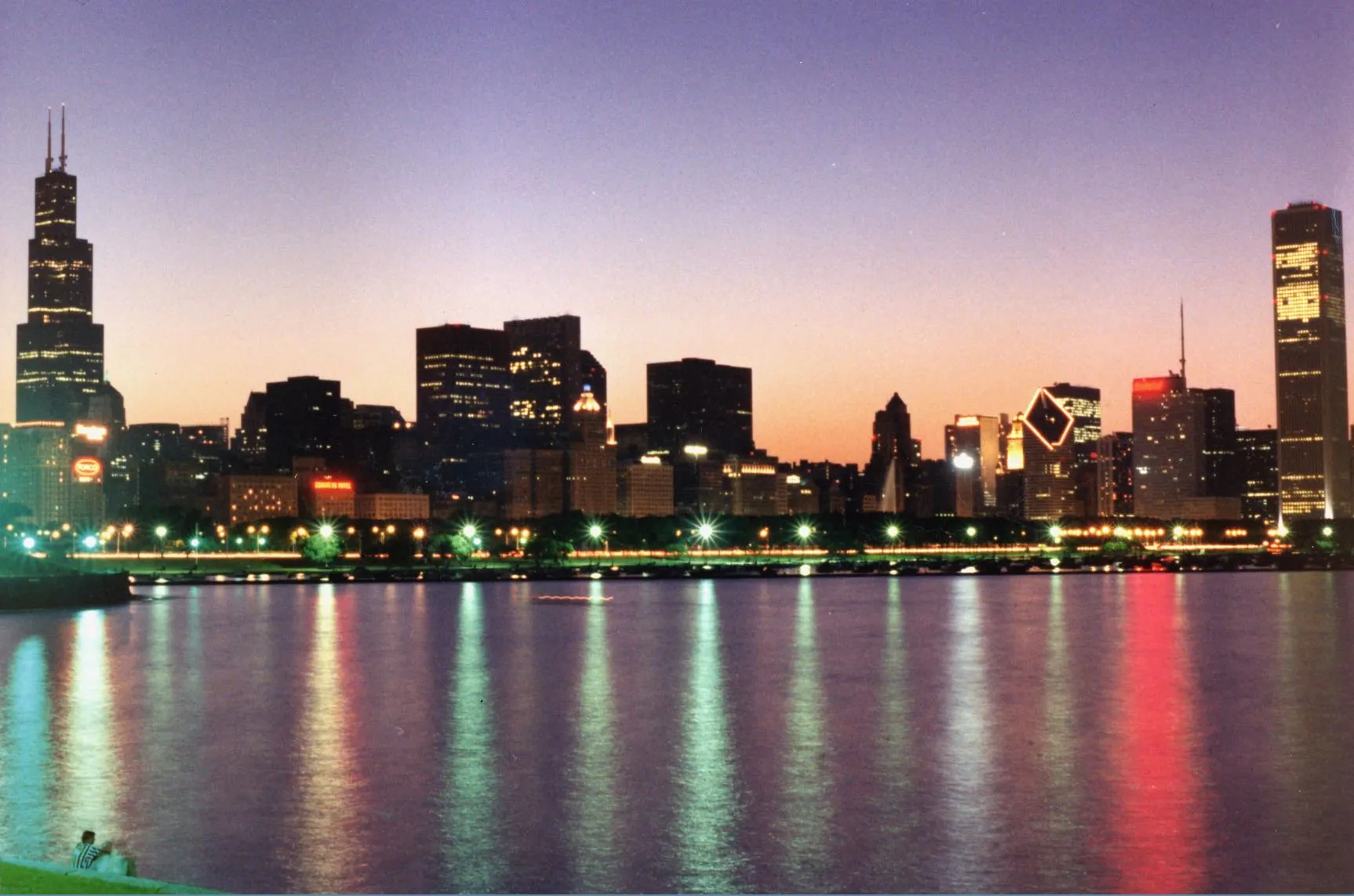





















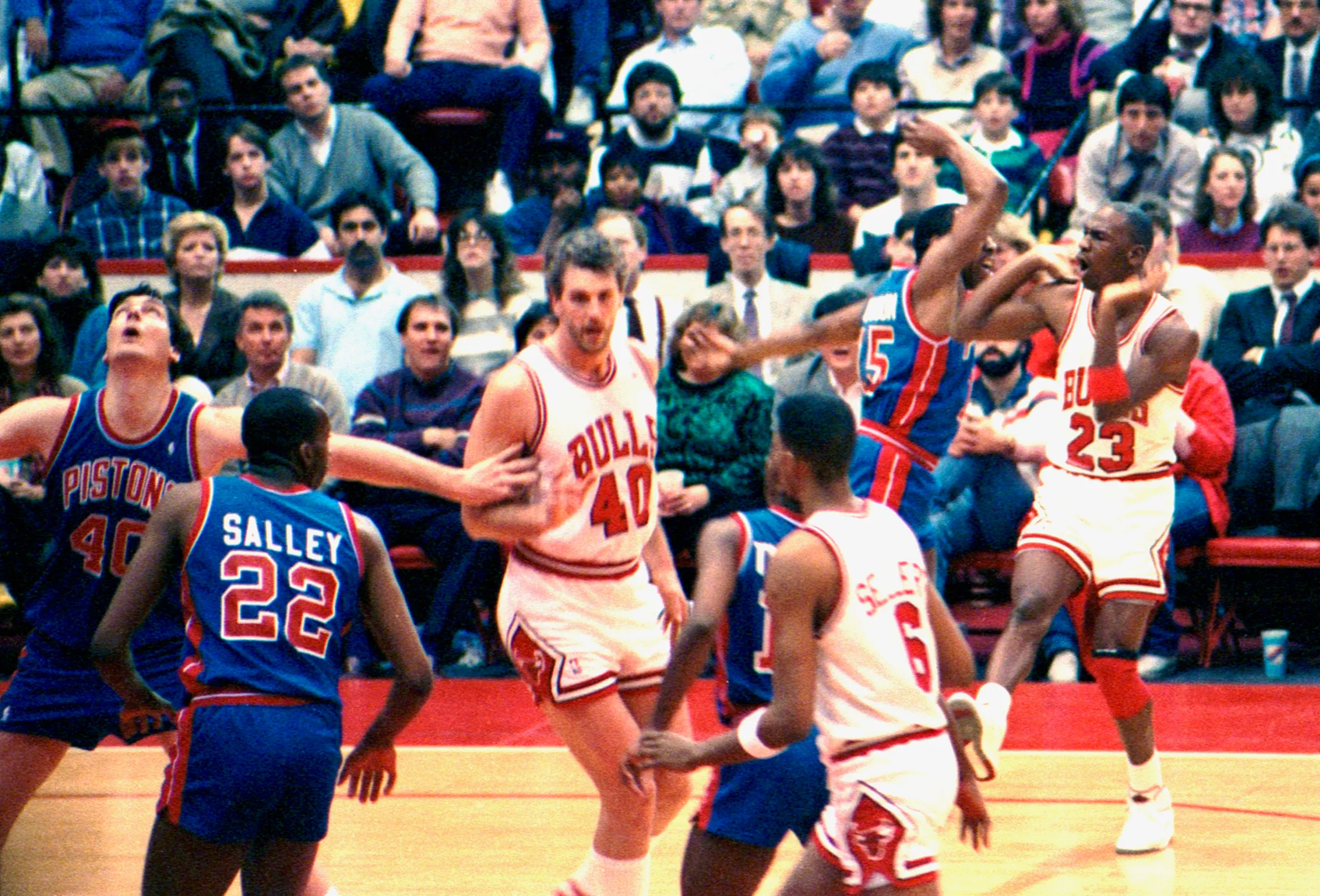











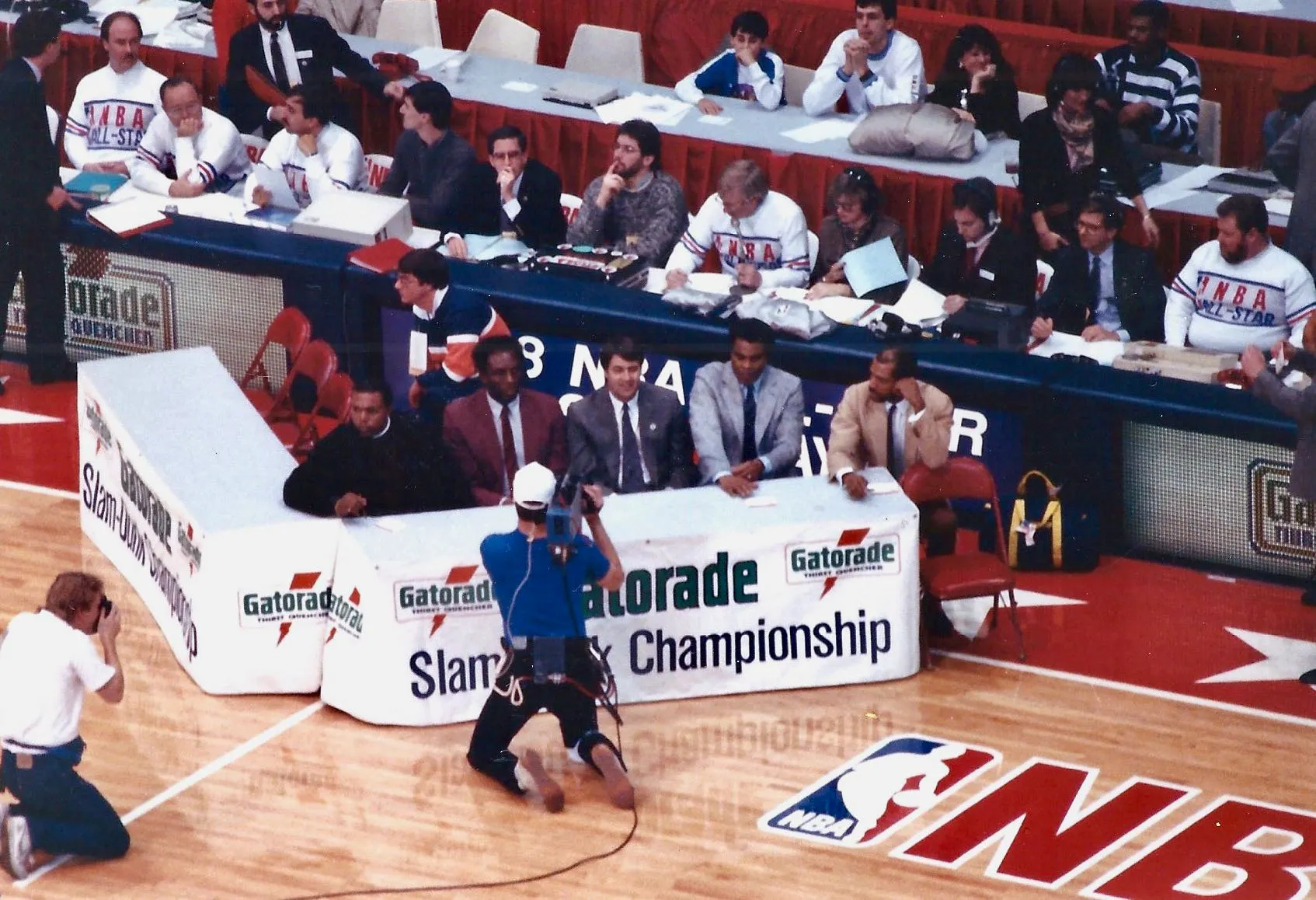

















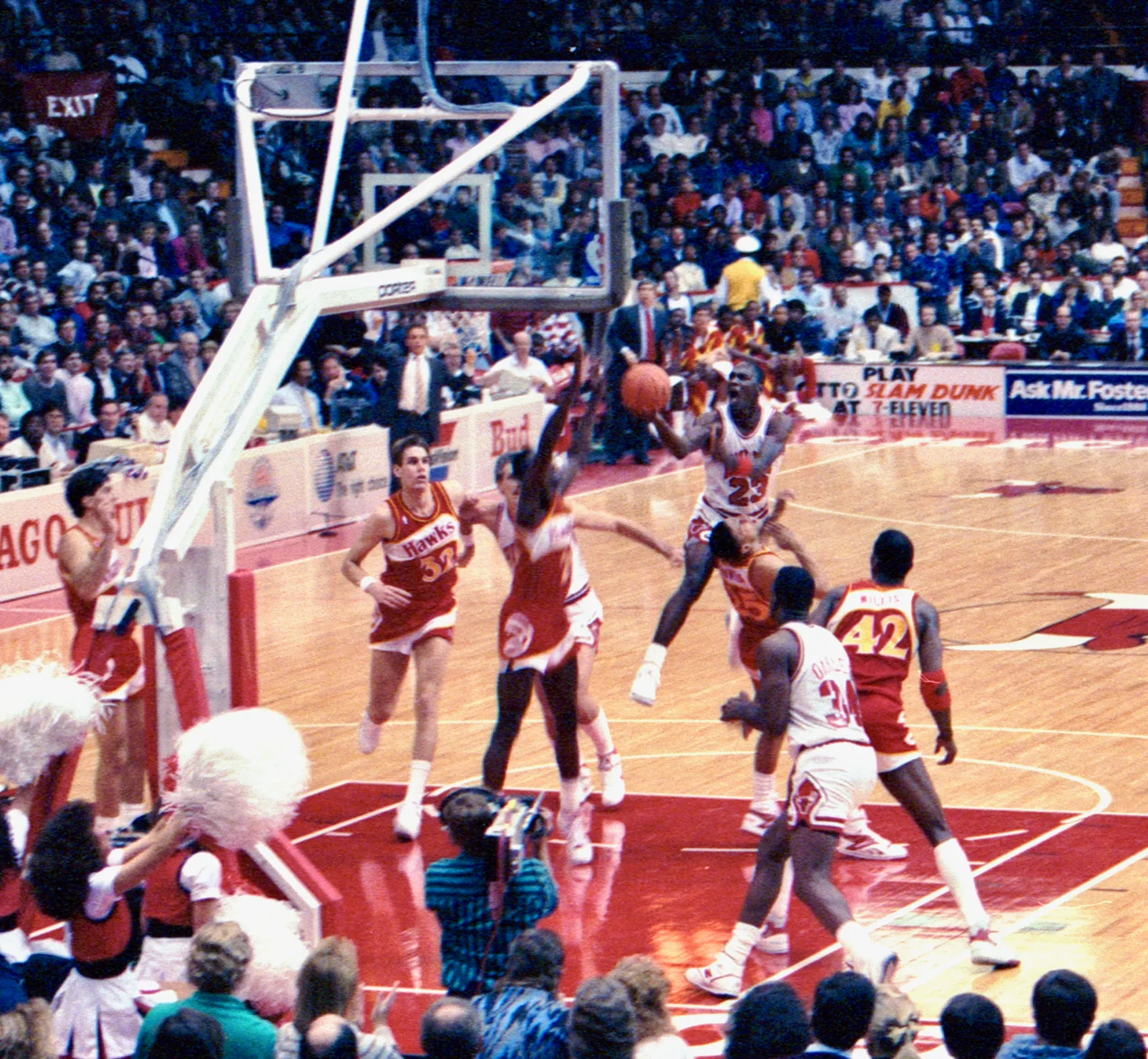














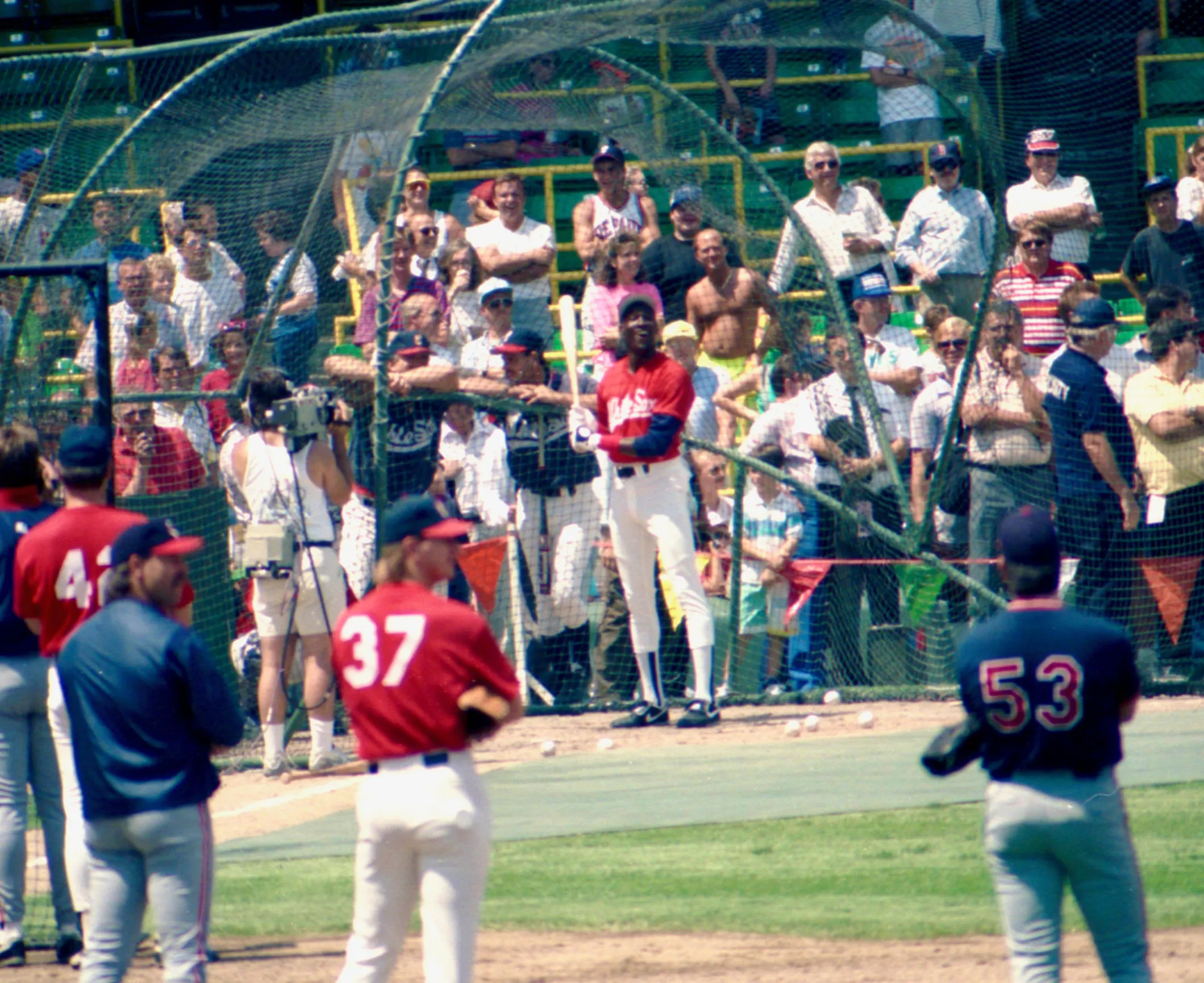





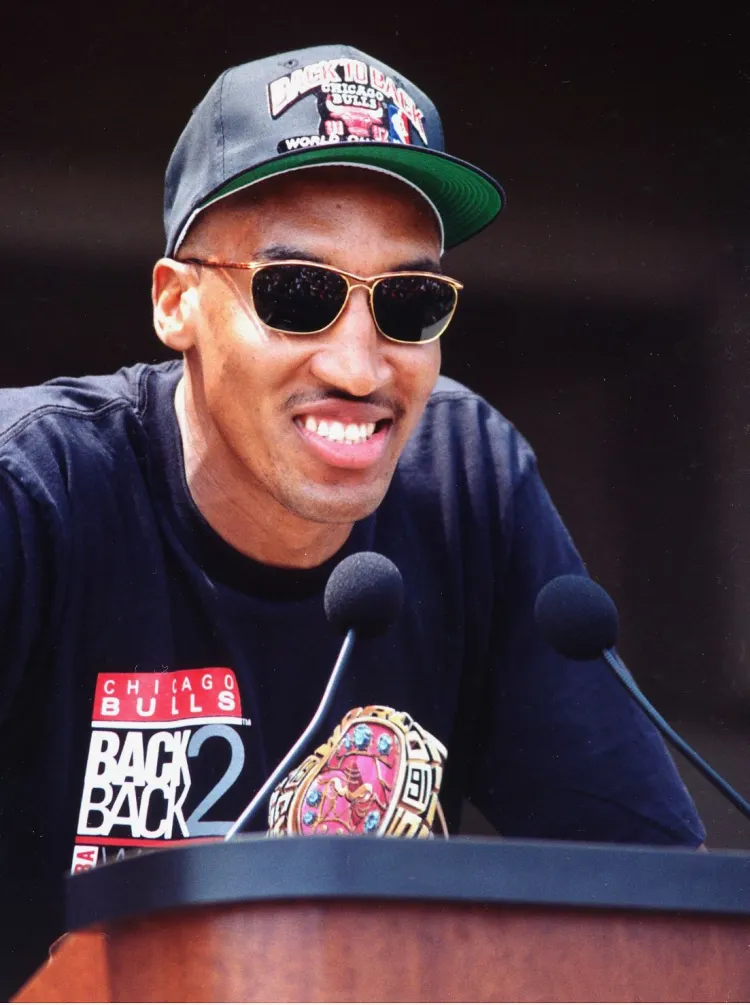
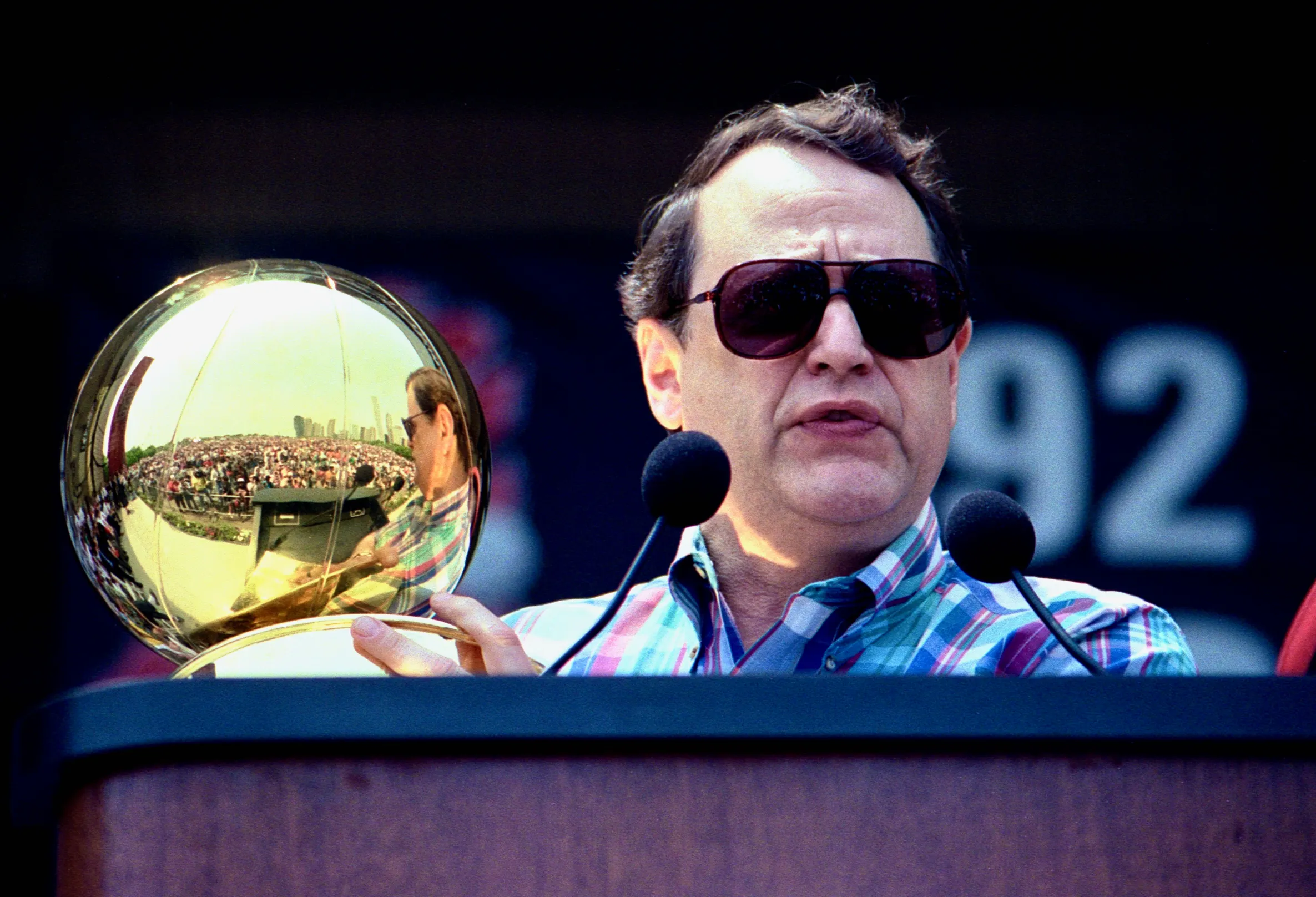


















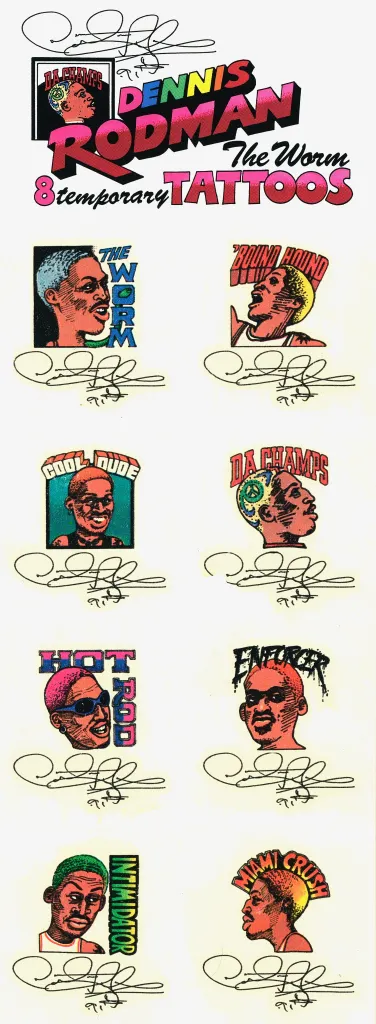


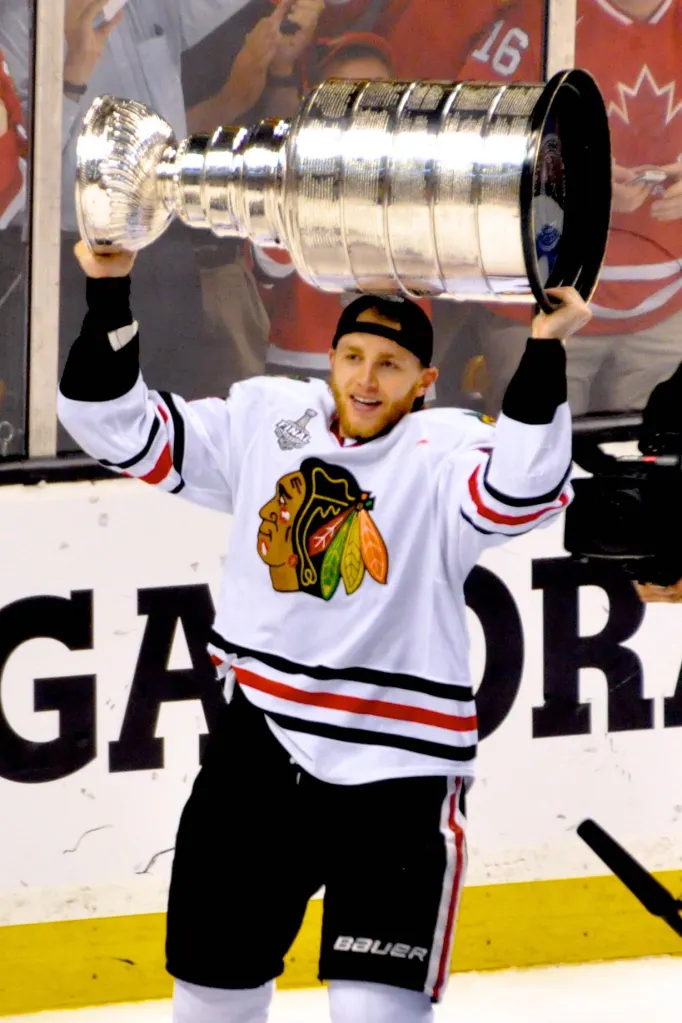








Commentaires